Is the Hakone Freepass Worth It? Guide + Cost Breakdown
9 min readWhen planning your first trip to Hakone, there can be a lot of confusion about whether or not the Hakone Freepass is worth purchasing for a 2 to 3-day trip....
The post Is the Hakone Freepass Worth It? appeared first on Bucketlist Bri.
When planning your first trip to Hakone, there can be a lot of confusion about whether or not the Hakone Freepass is worth purchasing for a 2 to 3-day trip.
I know because I felt the same!
The Hakone Freepass is marketed as a “convenient, value-priced excursion ticket” for sightseeing Hakone with unlimited use of 8 modes of transportation.
But when you don’t know the area, that information can be super overwhelming!
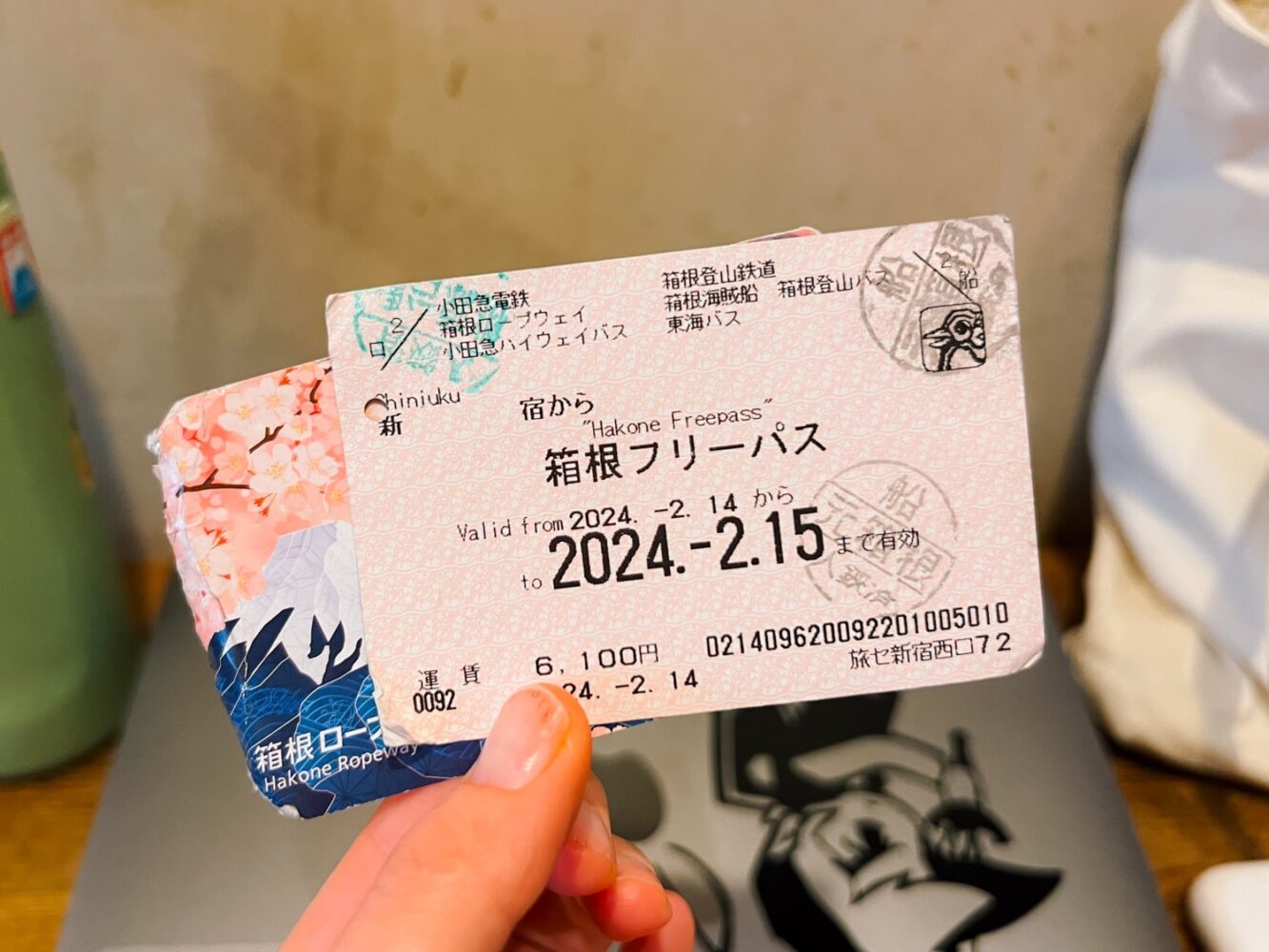
Disclaimer: This post contains affiliate links that may earn me a small commission should you decide to click through and make a valid purchase (at no extra cost to you). Thanks so much for your support!
After visiting Hakone for three days and nights, I finally feel like I cracked the code. 😵💫
In short, the Hakone Freepass is worth it, if only for the peace of mind it gives you when getting around Hakone.
In this guide, I’ll compare the cost and inclusions of the Hakone Freepass (versus DIY and other passes) so you can better understand what it all entails and how to make the most of your time in Hakone when you arrive.
show
Complete Guide to the Hakone Freepass
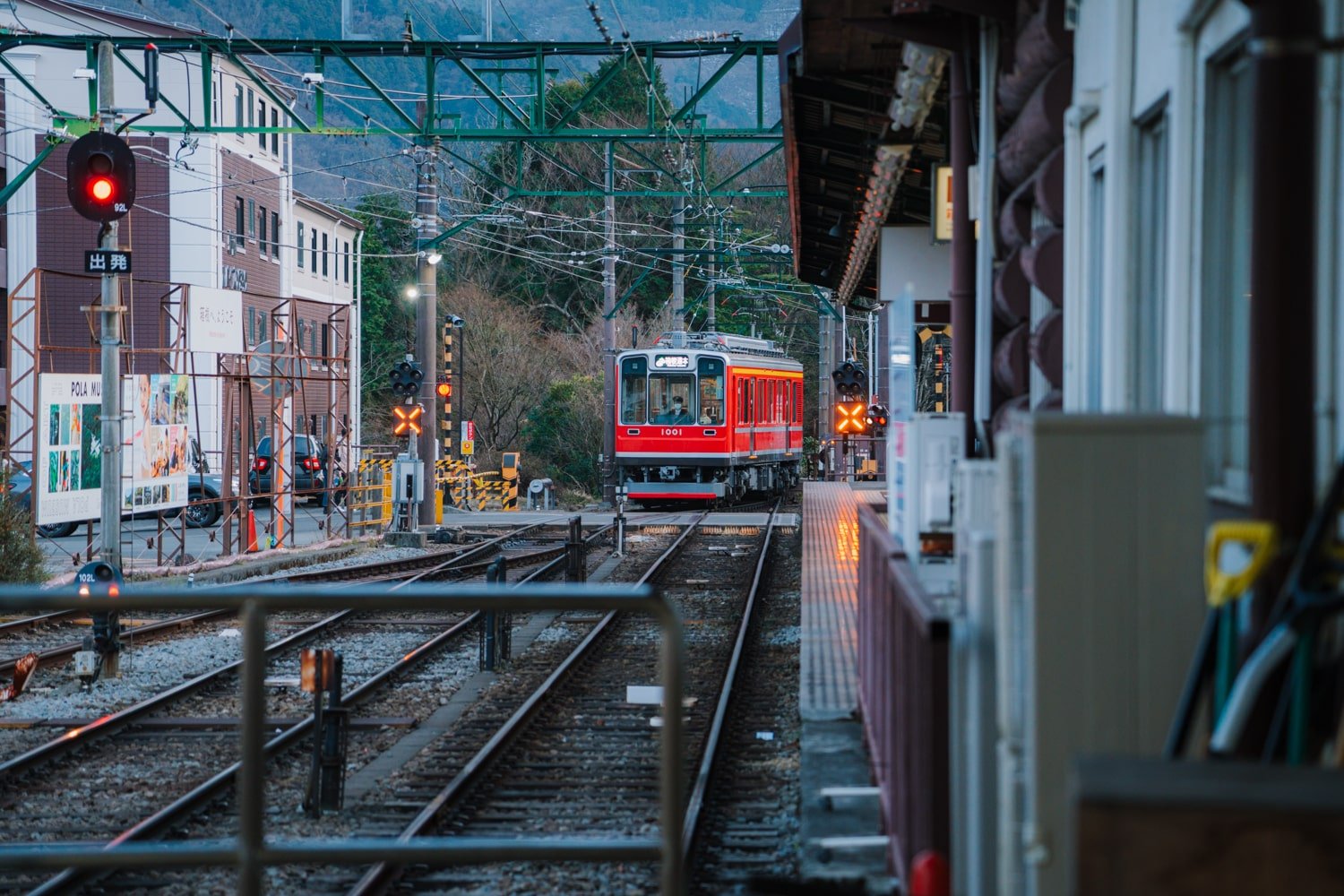
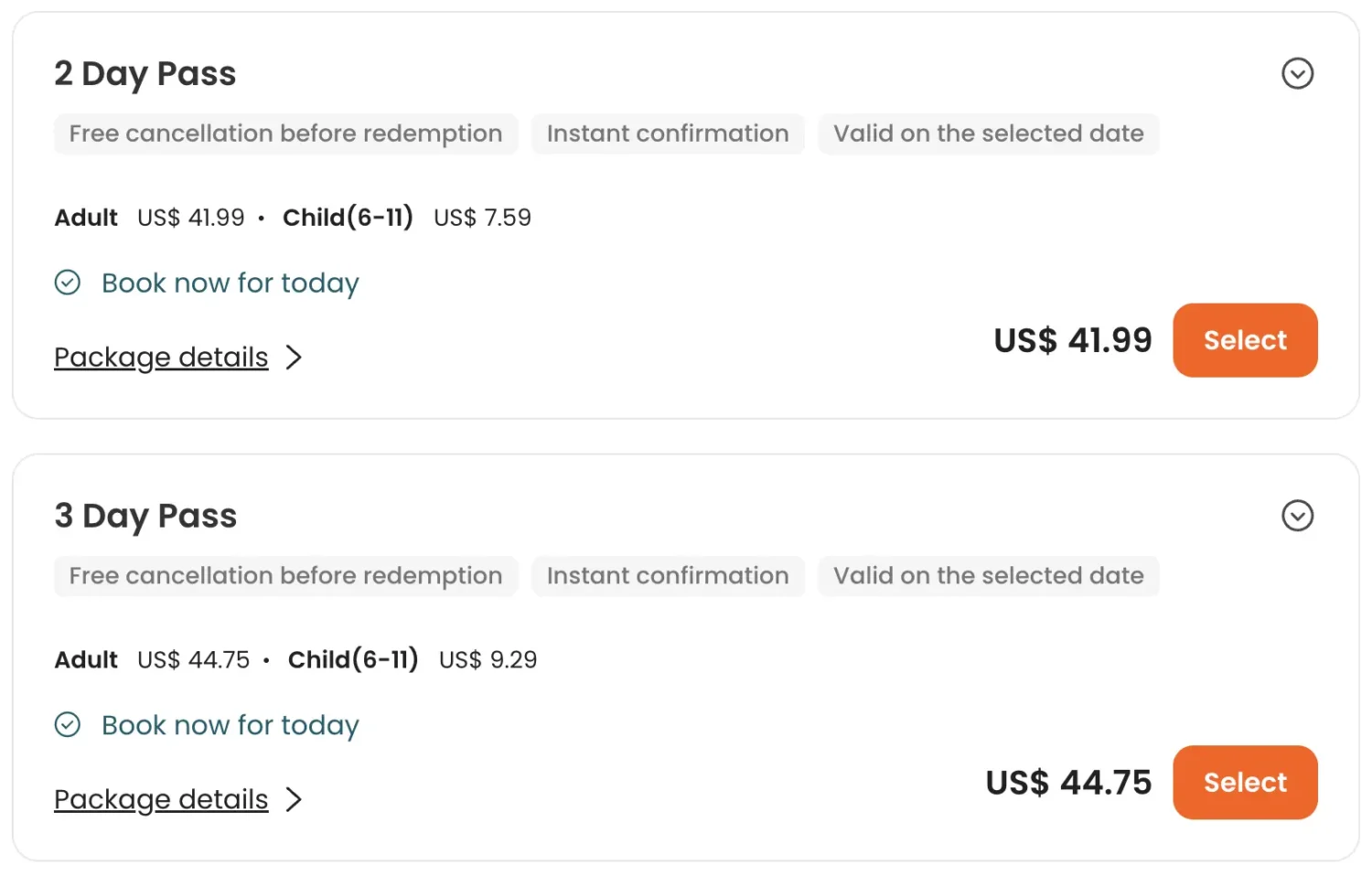
What the Hakone Freepass Covers (& What It Means)
The Hakone Freepass covers 8 modes of public transport, but here’s what that means!
The Hakone Tozan (Train, Cable Car, and Bus)
The Hakone Tozan consists of three modes of transport, which you’ll need to use to access a few top attractions such as Miyanoshita, the Hakone Gora Park, the Hakone Open-Air Museum, and more.
- 🚆 Train connecting Hakone-Yumoto Station to Gora Station.
- 🚡 Cable car connecting Gora to Sounzan.
- 🚎 Bus which itself includes 8 lines indicated by a letter and a color on the map (e.g. “T” for Togendai, Line “G” for Gotemba Line, “K” for Kyukaido Kine, etc).
🚌 Kanko Shisetsu-Meguri Bus
These are premium sightseeing buses that include the S and M lines.
This all will make sense once you have a map in your hand but, for now, here’s a photo showing the different lines and colors!
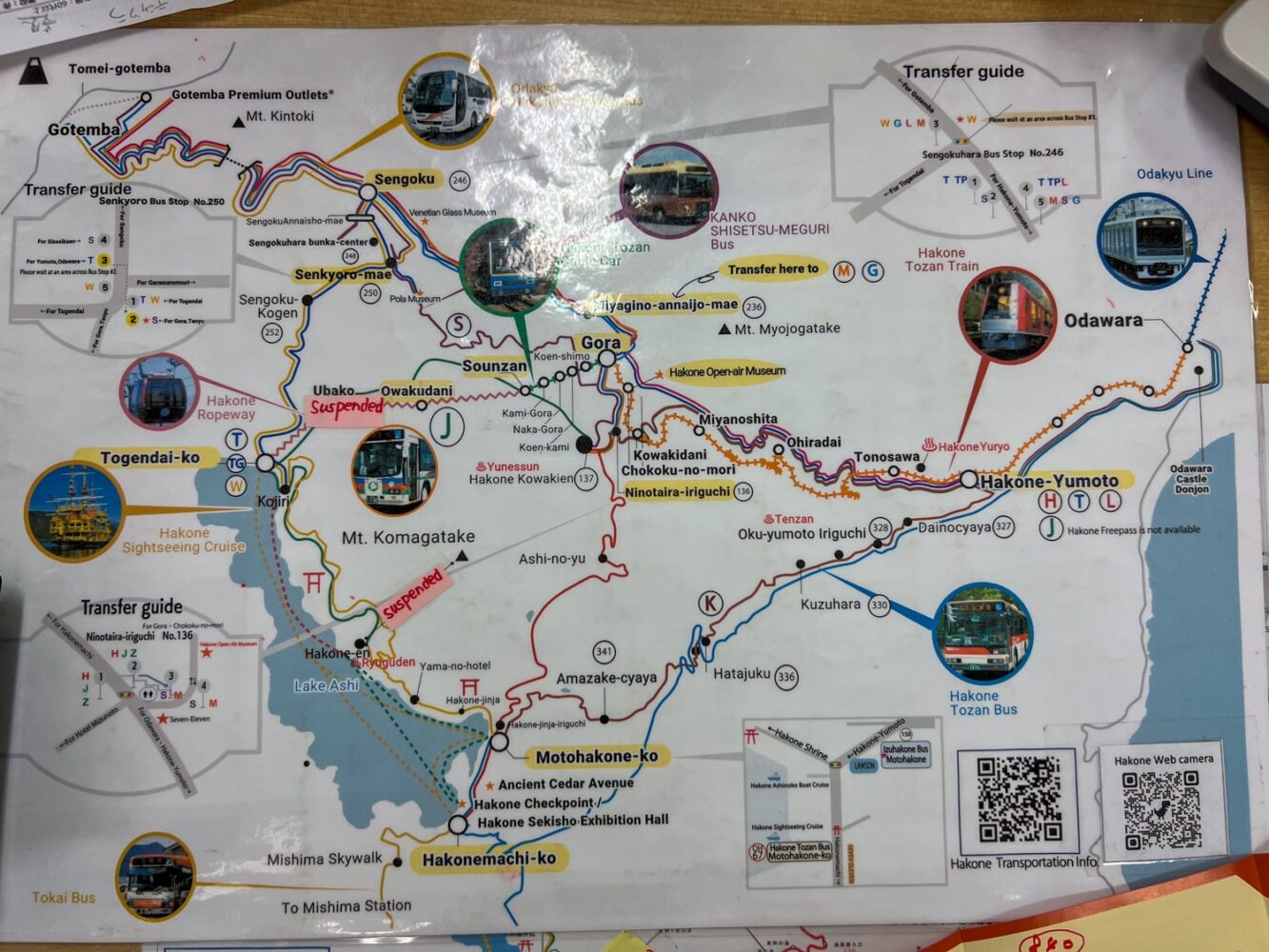
What is important to know is what you want to visit and see/do in Hakone because it is impossible to see and do it all in just two days (or even three).
This is why a little foresight can be very helpful for planning your trip because you won’t end up using all modes of transportation, depending on what you want to do and where you stay in Hakone.

🛳️ Hakone Sightseeing Cruise
Have you seen those iconic photos of a lake with views of Mt Fuji and a red torii gate?
If so, that view is likely from the Hakone Sightseeing Cruise, a pirate-like boat cruise that crosses Lake Ashi—a 3000-year-old crater lake.
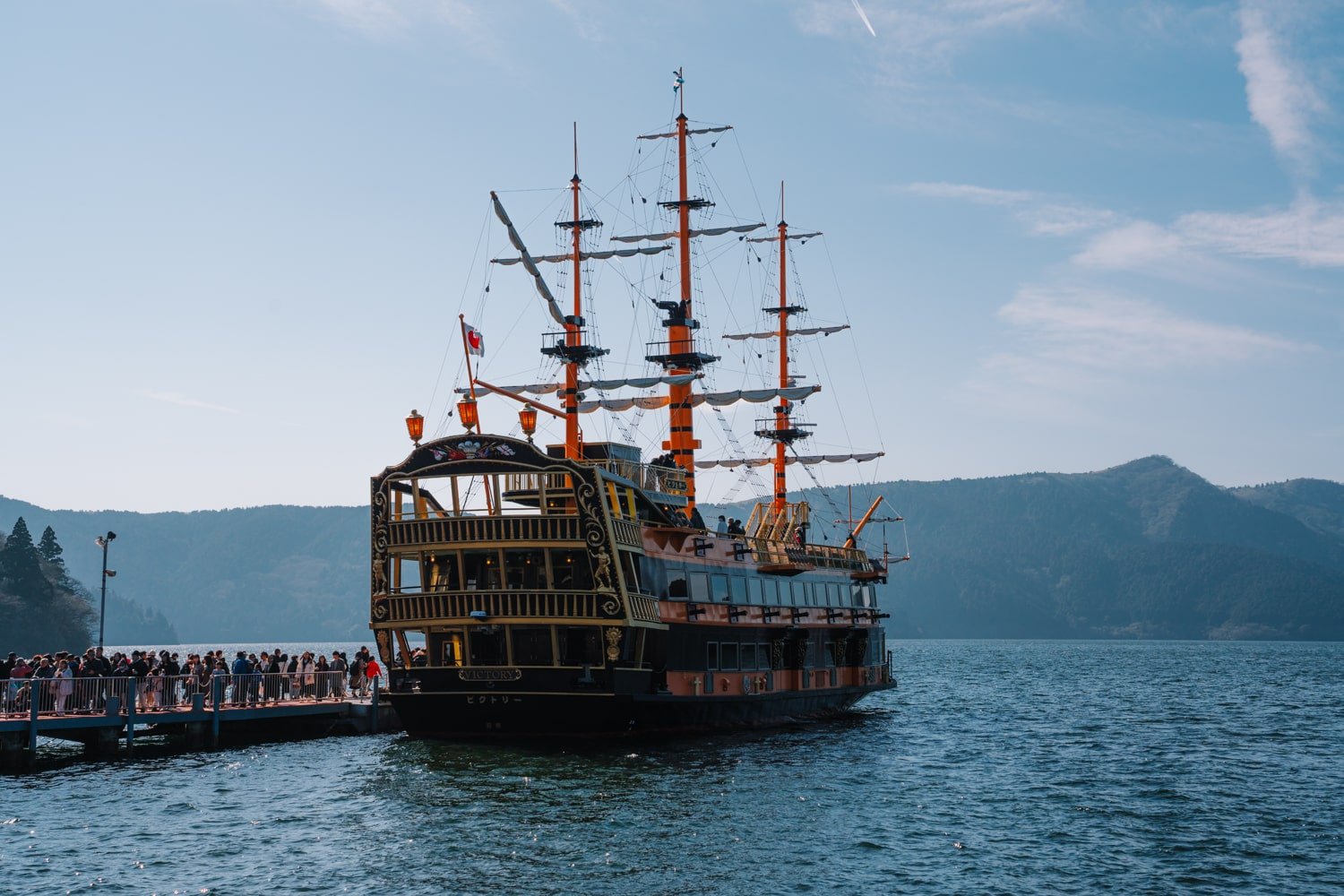
The boat cruise is one of the main tourist attractions in Hakone — purchase your online ticket here! 🎟️
Once you cross the lake (it is recommended to start at the Motohakone-ko side) and reach Togendai, you can then take the Hakone Ropeway.
🚠 Hakone Ropeway
The Hakone Ropeway is essentially the aerial tram that connects Togendai to Sounzan. Again, if you’re not familiar with these names, it doesn’t mean much, right?
In short, the ropeway crosses the volcanic sulfur fields of Hakone and makes a stop at Owakudani (Hakone’s “Hell Valley”).
Owakudani is famous for its sulfur activity and the Owakudani black egg.
These Owakudani eggs are simply normal eggs that are cooked for one hour in the hot springs. They turn black because of the iron that sticks to the shell!
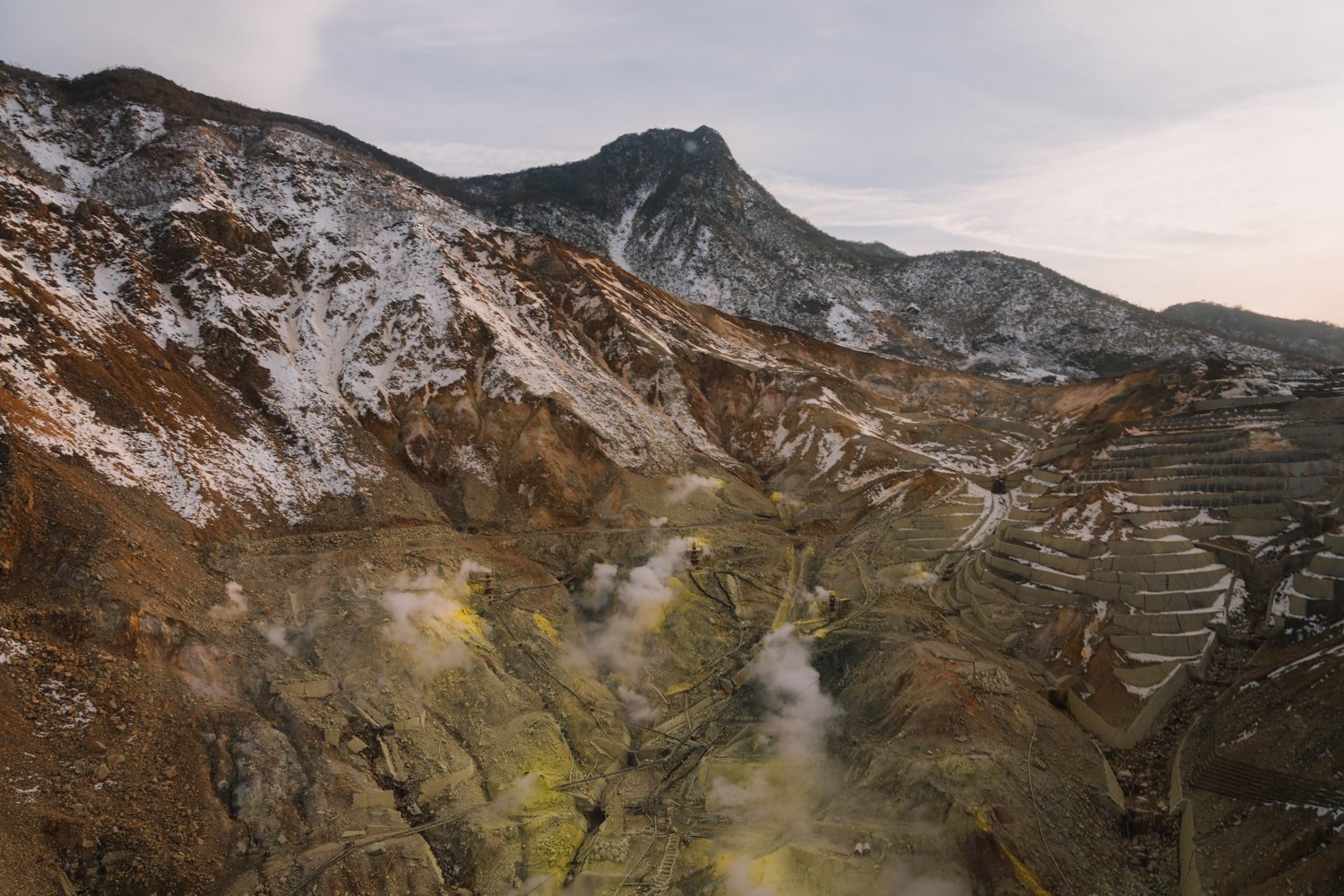
They taste like a normal egg too, but they say eating one will prolong your life by 7 years, so you can expect a long queue to purchase your bag of 4 black eggs at the shop!
I was bummed not to buy/try the famous Owakudani black eggs because the last ropeway of the day to reach Sounzan was at 4:15 pm and I had to rush to make it on time — so keep this in mind when planning your day!
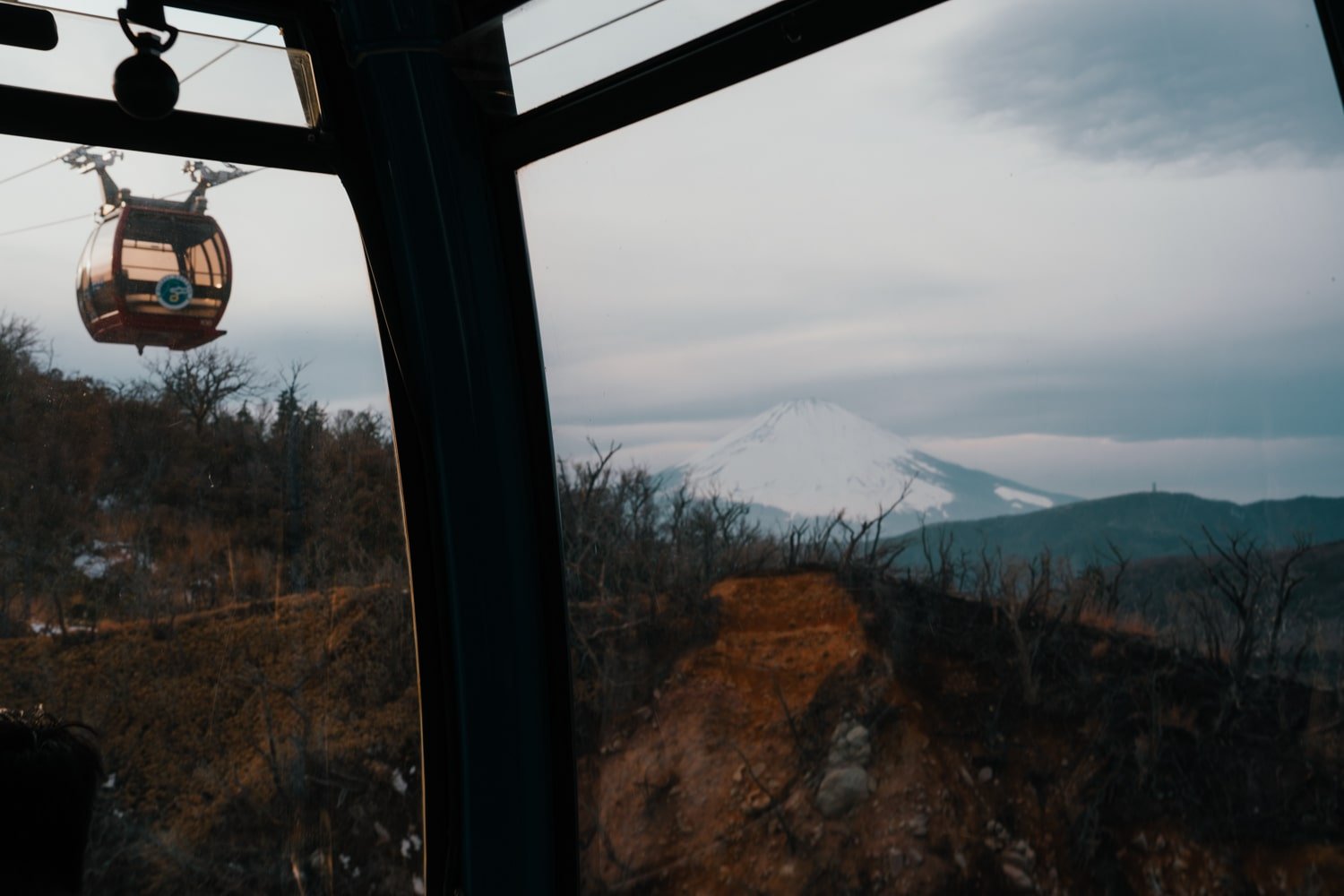
✨ In sum, the Hakone Freepass covers all public transport within/around the Hakone area PLUS a round-trip ticket to/from Shinjuku to Odawara station*, and a few discounts on attractions (e.g. onsens and certain museums have a slight discount but aren’t entirely free).
*Note that the Odawara station is not the Hakone-Yumoto station.
If you don’t purchase the Romancecar Ltd. Express ticket from Shinjuku directly to Hakone-Yumoto (which is an additional cost of ¥1,200 one-way on top of the ¥6,100 Hakone Freepass), then you will need to transfer from Odawara to Hakone-Yumoto on the commuter train.
Most people opt for the extra Romancecar ticket because it is slightly faster and easier than the regular trains (you don’t have to transfer at Odawara Station, for example).
👉 You can read here about the differences between the Romancecar and the regular trains going toward Hakone.
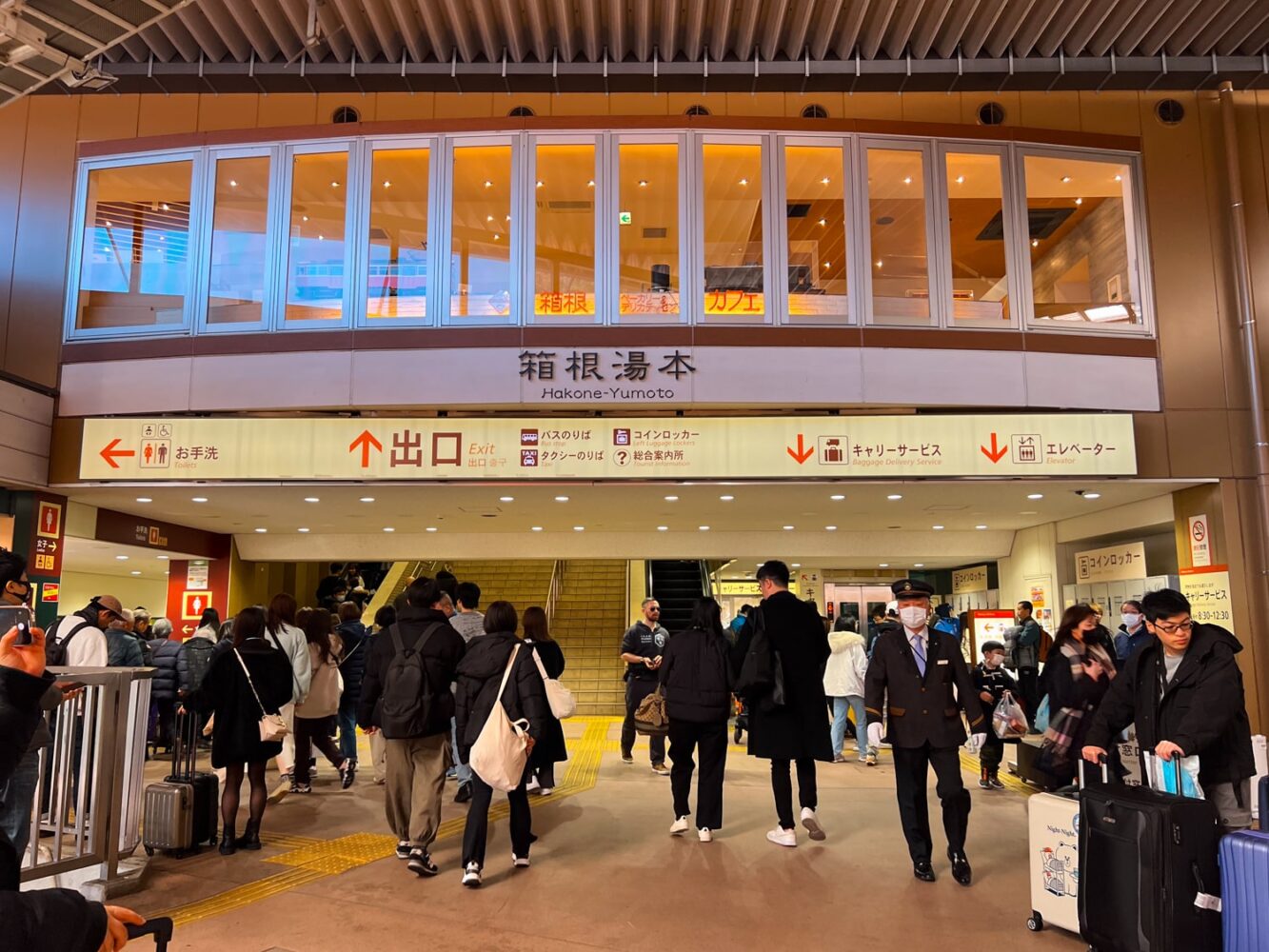
Is the Hakone Freepass Worth It?
So, all in all, is the Hakone Freepass worth it?
Let’s look at the costs!
Cost Breakdown vs. DIY
The Hakone Freepass varies in price depending on where you purchase it.
- From Shinjuku, it costs ¥6,100 (2 days) and ¥6,500 (3 days).
- From Odawara, it costs ¥5,000 for two days and ¥5,400 for three days.
- Same price online via Klook ($40 – redeemable voucher)
Keep in mind that the Romancecar is an additional ¥1,200 one-way.
Most people visit Hakone in 2 days, so if you get the Hakone 2-day Freepass + the Romancecar ticket, it will cost ¥7,300.
⚠️ I will quickly mention here that if you plan to visit the Mt Fuji Five Lakes area after Hakone, consider purchasing either the Fuji Hakone Pass (¥9,340 for 3 days; 2 in Hakone, 1 in Fuji) OR the 3-day Hakone Freepass (¥6500) and use the third day of the Hakone Freepass to get to Fujikawaguchiko, since simply getting there (via train, bus, and bus) without the pass will cost over ¥3,000 alone—I learned this in hindsight and it hurt!).
If you don’t get the Hakone Freepass and visit Hakone on your own with public transport, here are some sample costs in ¥.
- Lake Ashi cruise ticket (one-way): ¥1,200 per adult
- Ropeway ride from Togendai to Sounzan (crossing Owakudani): ¥1,500
- Cable car from Sounzan down to Gora: ¥430
- Bus from Gora to Hakone-Yumoto: ¥460
- Bus from Hakone-Yumoto station to Motokahone (where you can see the Hanoke Shrine, Hakone Checkpoint, and take the sightseeing cruise, plus more): ¥1,080
Already, the above adds up to ¥5,000 and this is just to get to the different places to visit around Hakone.
I also used the Hakone Freepass for the bus ride to get to the trailhead to hike Mount Kintoki. 🥾
So the Hakone Freepass is a good deal!
That amount doesn’t include getting to/from other sites (and there’s a lot to do!) or discounts to visit the museums or onsens. For example, with the Hakone Freepass, entry into the Tenzan Onsen cost me ¥1,350 instead of ¥1,400 (while it isn’t much, it still counts!)
✨ IN SUMMARY ✨
If you are visiting Hakone in 2 days and/or in 3 days, then the Hakone Freepass is worth it in terms of value. Not to mention it’s so much easier to get on/off the buses and trains by showing your pass rather than fumbling for exact change or swiping your Icoca card! Money saved and peace of mind? Deal!
🎟️ Purchase your Hakone Freepass Voucher here
Note: if you visit Hakone with a rental car, you probably don’t need the pass as the savings mostly come from frequent use of the Hakone public transport. 🚙
Where to Purchase the Hakone Freepass
There are several ways to pick up a 2-day or 3-day Hakone Freepass:
- Online via the Odakyu official site or purchase a voucher
- In person at the Odakyu Service Sightseeing Centers
- Shinjuku Station (West Exit)
- Odawara Station
- Ticket vending machines
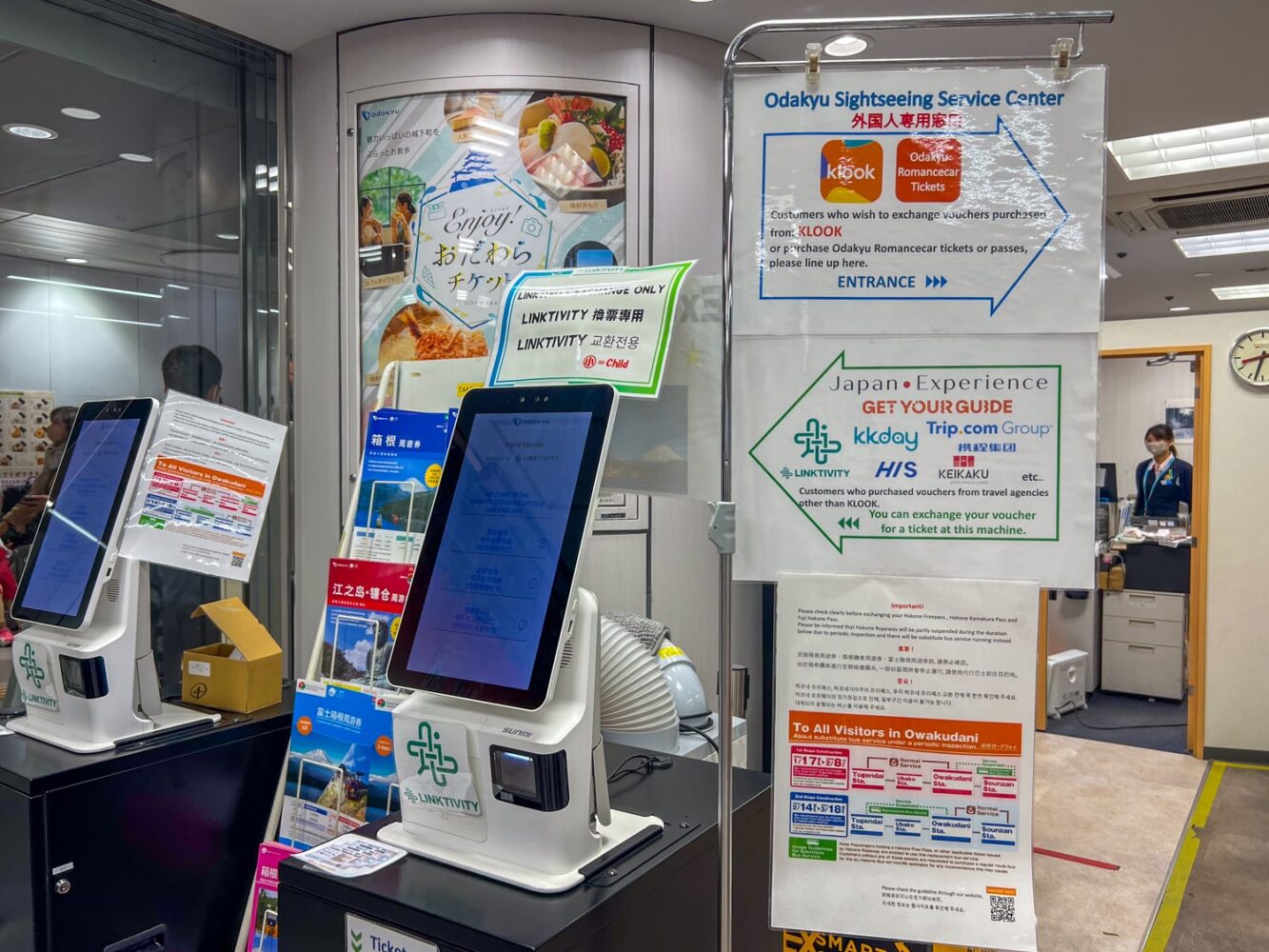
You can also reserve your Romancecar tickets online or purchase them at Shinjuku Station via the tourist info center or at one of the ticket machines.
The earliest Romancecar Ltd. Express train leaves at 7:37 AM on weekdays and 7:00 AM on weekends.
The early trains fill up quickly for day trippers going to Hakone, so if you want to make the most of your first day in Hakone, then you should reserve the early train in advance!

Hakone Freepass vs. Fuji-Hakone Pass
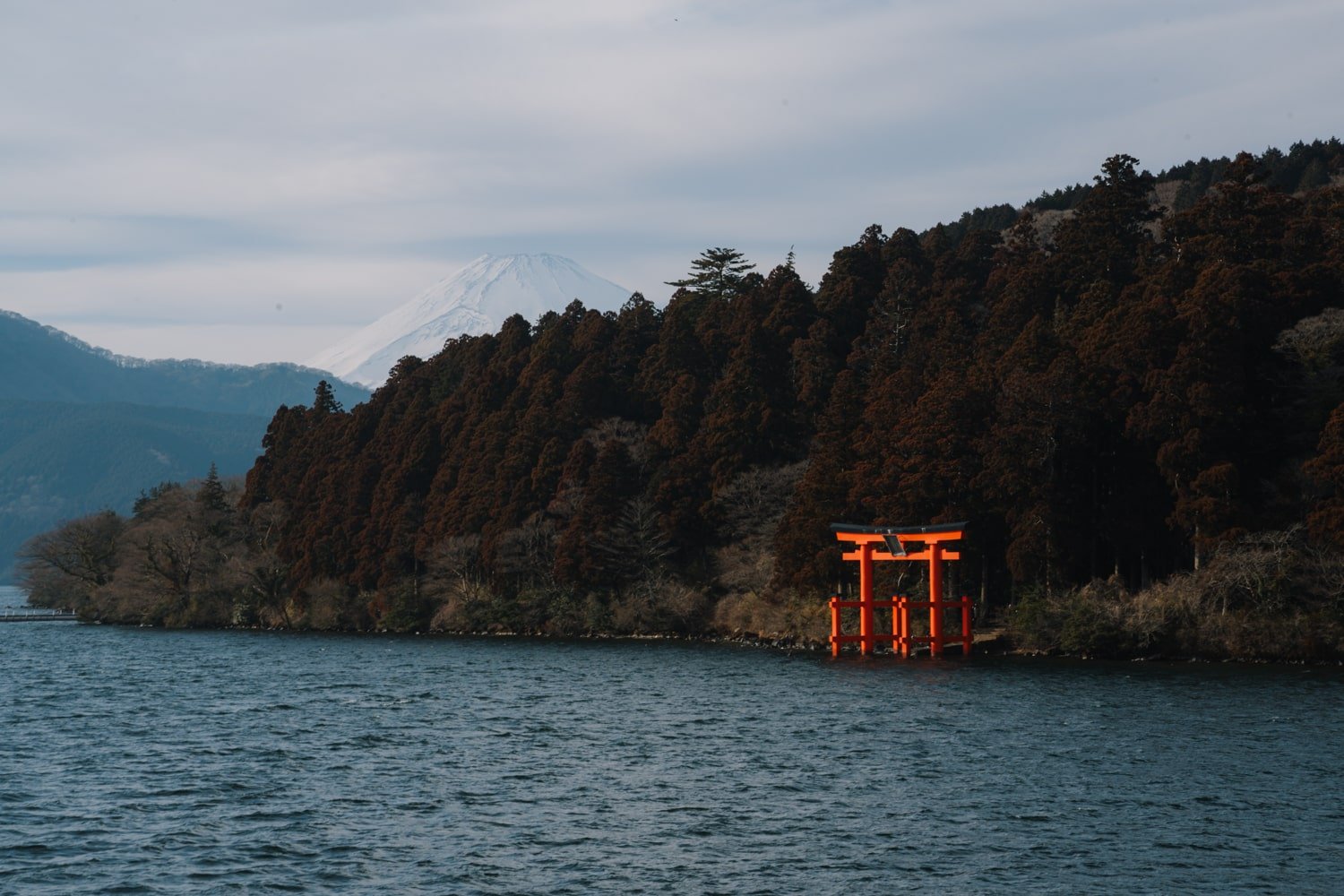
If you’re planning two days in Hakone and one day in the Mt Fuji five lakes area, then you might consider the Fuji-Hakone Pass over the Hakone Freepass.
However, I would suggest sticking to the 2 or 3-day Hakone Freepass if you plan to slow down a bit and spend more than one day in Fujikawaguchiko.
The cost difference between the Hakone Freepass (3 days) is ¥6,500 whereas the 3-day Fuji-Hakone Pass costs ¥9,340.
If you’re staying just two days (one night) in Hakone and want to do only one day in Fuji, then the Fuji Hakone Pass is well worth it.
And if you spend two nights in Hakone (and take the 3-day freepass), you can use that third day to get to Fuji. That’s ¥2,600 in savings!
To get to Fujikawaguchiko from Hakone-Yumato station (without the pass) costs roughly ¥3,390 (¥840 from Yumoto Station via “T” line to Sengoku, plus ¥800 via “W” line from Sengkoku to Gotemba, and ¥1,750 for the bus from Gotemba Sta. to Fujikawaguchiko).
In either case, visiting both destinations (Hakone and Fuji five lakes) in less than three days is super rapid, so I would suggest splitting it up into 2–3 nights in Hakone and 1–3 nights in Fujikawaguchiko (or Fujiyoshida, Yamanaka, etc).
The Hakone Freepass and the Fuji Hakone Pass aren’t the only “discount tickets” out there.
There are also these passes:
- Hakone Kamakura/Enoshima Pass (3 days)
- Hako Ticket (which is an unlimited 1-day pass to all museums and attractions in Hakone)
- Hakone Freepass & Hako Ticket Plus (unlimited transport + museum/attraction entries)
- Ashinoko Liner (1 or 2-day pass) offering a direct bus to Lake Ashi
- Tozan Ropeway/Cable Car (2-day pass)
- Hakone Tozan Train 1-Day pass (unlimited use between Odawara to Gora)
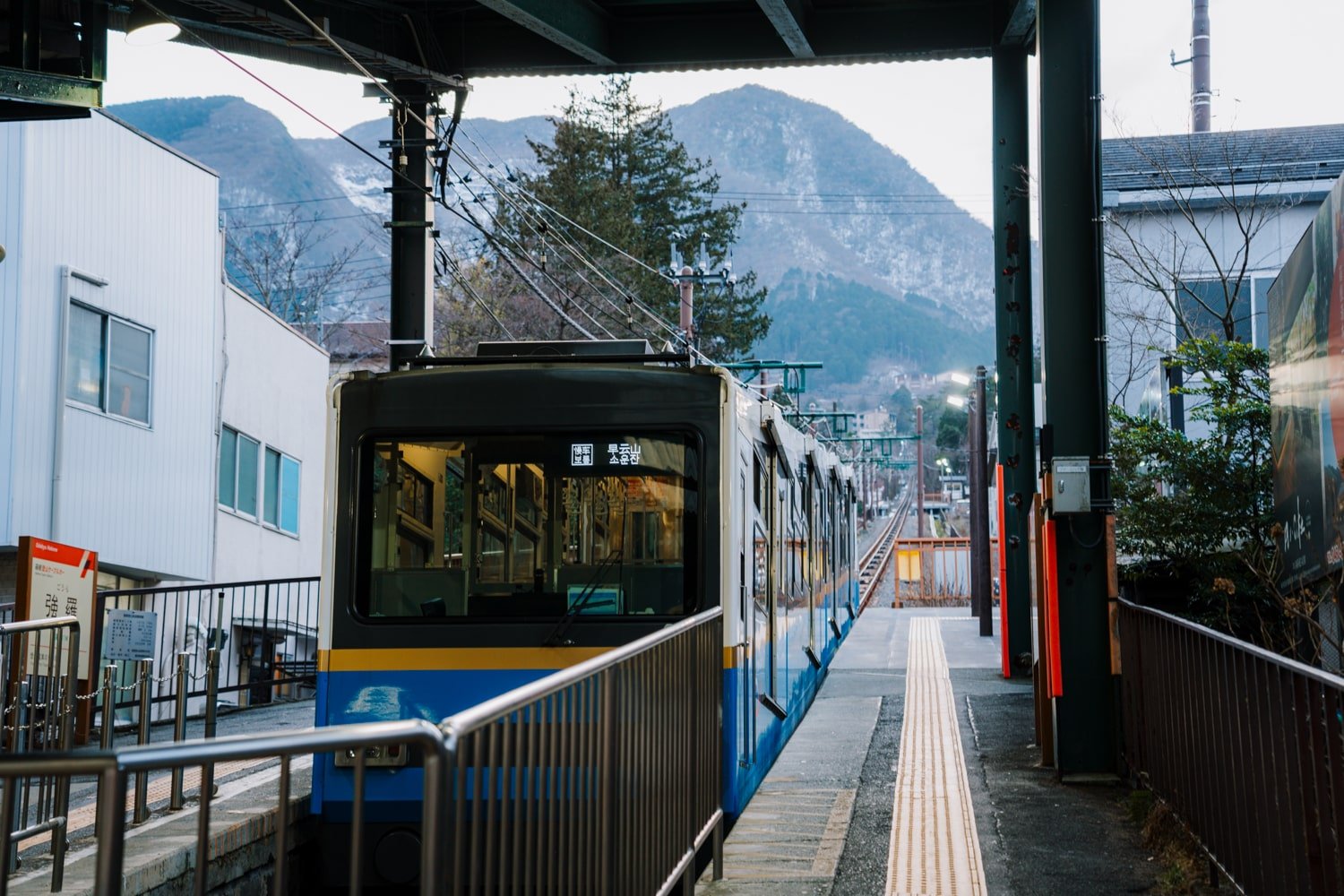
How to Make the Most of Your Hakone Freepass
With discounts to over 70 attractions in the Hakone area, plus unlimited use of transport, the Hakone Freepass provides a ton of value but it can be very overwhelming to figure out how to actually… use it.
My suggestion is to decide beforehand which places you’d like to visit most, since no matter how well you optimize your time, there will be delays, crowds, queues, and weather surprises.
Next, I’d suggest visiting the Hakone area in either a clockwise or counter-clockwise rotation to keep things simple.
When arriving at the Hakone-Yumato station from Shinjuku, you have two choices:
- Option A. Take the bus south toward Motohakone-ko (toward Lake Ashi, Hakone Shrine, Amesake Teahouse, etc) and go clockwise from there.
- Option B. Take the Tonzan train or bus lines in the direction of Gora (where you can visit several museums, the Gora Park, and take the cable car that leads to Sounzan which is where you can then take the ropeway to Owakudani before finishing with the Lake Ashi cruise).
Whichever direction you decide to start the “loop” will also depend on where your accommodation is.
The basic tour of Hakone (Lake Ashi cruise and Hakone shrine + ropeway/Owakudani + cablecar + transportation times to/from accommodation) will take roughly 5 hours not counting visiting time or lunch/dinner.
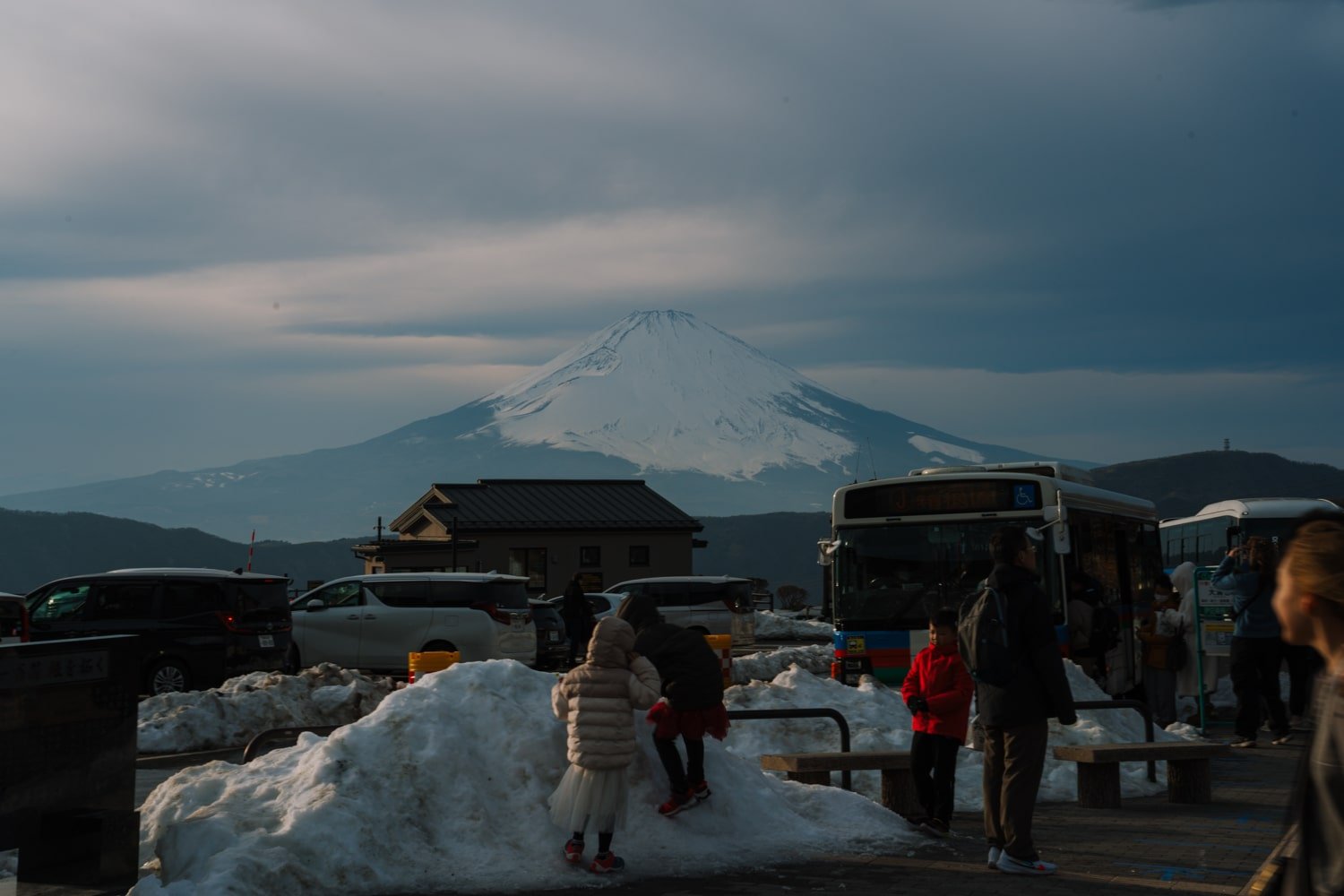
As you plan your Hakone itinerary, keep in mind the hours of operation (and plan in extra wiggle room as there will be long lines for the boat, ropeway, shrine, and other attractions).
I hope this guide to the Hakone Freepass helps you plan your trip! I seriously wish I had my guide when I was planning—it would have made things a lot simpler. 😂

That said, if something isn’t clear and you have additional questions, please drop me a comment below!
Happy and safe travels in Hakone! 💛
<!–
–>



